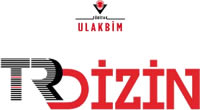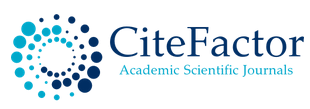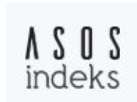Fen Bilgisi Öğretmen Adaylarının Laboratuvar Kavramına Yönelik Bilişsel Yapılarının ve Görsel İmajlarının İncelenmesi: Bir Karma Yöntem Araştırması
FEN BİLGİSİ ÖĞRETMEN ADAYLARININ LABORATUVAR KAVRAMINA YÖNELİK
DOI:
https://doi.org/10.15659/jancr.v8i2.182Anahtar Kelimeler:
Laboratuvar- Fen Bilgisi öğretmen adayı- Bilişsel yapı- Görsel imajÖzet
Bu araştırmanın amacı, fen bilgisi öğretmen adaylarının laboratuvar kavramına yönelik bilişsel yapılarının ve görsel imajlarının incelenmesidir. Çalışma grubu, 2023-2024 eğitim-öğretim yılında bir devlet üniversitesinde öğrenim görmekte olan 80 fen bilgisi öğretmen adayından oluşmaktadır. Bu çalışmada yakınsak paralel karma yöntem deseni kullanılmıştır. Araştırmanın nicel verileri “Fen Laboratuvarı Tutum” ölçeği ile nitel verileri ise “laboratuvar” kavramına yönelik açık uçlu bir soru, kelime ilişkilendirme testi ve öğrenci çizimleri ile toplanmıştır. Araştırmanın nicel verileri SPSS istatistik programı ile nitel verileri ise içerik analizi ile analiz edilmiştir. Araştırma sonucunda; Fen Bilgisi öğretmen adaylarının fen laboratuvarına yönelik tutum düzeylerinde, cinsiyete ve bilimsel bir dergiyi takip etme değişkenine göre anlamlı bir farklılık olmadığı ancak sınıf seviyesine göre birinci sınıflar lehine anlamlı bir farklılık olduğu görülmektedir. Nitel verilerin sonuçlarına göre, fen bilgisi öğretmen adaylarının “laboratuvar” kavramıyla ilgili açık uçlu soruya verdikleri cevaplar, 5 kategoride toplanmıştır. Öğrenciler laboratuvar kavramını en çok deney (n=51) ve bilimsel çalışma (n=16) kavramlarıyla açıklamıştır. “Laboratuvar” kavramıyla ilgili kelime ilişkilendirme testine verdikleri cevaplar, 6 kategoride toplanmıştır. Öğrenciler laboratuvar kavramını en fazla cam malzemeler (n=76) ve deney (n=57) kelimeleri ile ilişkilendirirken, en az hissettikleri duygular (n=9) ile ilişkilendirmişlerdir. “Laboratuvar” kavramı ile ilgili çizimleri incelendiğinde, 7 kategoride toplanmıştır. Öğretmen adaylarının çizimlerinde en fazla cam deney malzemelerinin (n=130) ve laboratuvardaki eşyaların (n=80) olduğu dikkat çekmektedir.
Referanslar
- Abrahams, I., & Millar, R. (2008). Does practical work really work? A study of the effectiveness of practical work as a teaching and learning method in school science. International Journal of Science Education, 30(14), 1945-1969.
- Başaran, İ. E., Özden, Y., Yavuz, A., & Yurdakul, E. (2016). İlköğretim fen bilimleri laboratuvarı etkinlikleri: Görüşlere dayalı bir örnek. International Journal of New Trends in Arts, Sports & Science Education, 5(1), 1-7.
- Böyük, U., Demir, S., & Erol, M. (2010). Fen ve Teknoloji ders öğretmenlerinin laboratuvar araştırmalarına yönelik yeterlik görüşlerinin farklı değişkenlere göre incelenmesi. Türk Bilim Araştırma Dergisi, 3(4), 342-349.
- Büyüköztürk, Ş. (2011). Deneysel desenler. (Experimental patterns). (3. baskı). Ankara: Pegem Akademi.
- Can, Ş. (2012). Fen bilgisi öğretmen adaylarının laboratuar uygulamalarına yönelik düşüncelerinin cinsiyet, öğretim türü, sınıf düzeyi ve lise laboratuvar deneyimleri açısından araştırılması. Türk Fen Eğitimi Dergisi, 9(1), 3-12.
- Cansever, S. (2022). Fen eğitiminde laboratuvar destekli öğretimin öğrencilerin akademik başarı, tutum ve bilimsel süreç becerilerine etkisi. Yayınlanmamış yüksek lisans tezi, Sivas Cumhuriyet Üniversitesi, Eğitim Bilimleri Enstitüsü, Sivas.
- Creswell, J. W., & Plano Clark, V. L. (2007). Designing and conducting mixed methods research. Thousand Oaks, CA: Sage.
- Çakmak, M. (2008). Fen Bilgisi öğretmen adaylarının laboratuar tutumları ile fen bilgisine yönelik tutumları arasındaki ilişkinin değerlendirilmesi. Yayınlanmamış yüksek lisans tezi, Kafkas Üniversitesi Fen Bilimleri Enstitüsü, Kars.
- Dilber, R., Sönmez, E., Doğan, S., & Sezek, F. (2006). Fizik bölümü öğrencilerinin laboratuarlara karşı tutumlarının değerlendirilmesi ve karşılaştıkları sorunların tespit edilmesi üzerine bir çalışma. Çukurova Üniversitesi Eğitim Fakültesi Dergisi, 1(31), 102-109.
- Dobson, J. L., & Meyer, A. M. (2016). Investigating the relationship between student critical thinking and the ınstructional use of peer and self-assessment. The Journal of Effective Teaching, 16(3), 58-75.
- Ekici, G. (16-18 Eylül 2002). Biyoloji öğretmenlerinin laboratuvar dersine yönelik tutumlarının farklı değişkenler açısından incelenmesi. V. Ulusal Fen Bilimleri ve Matematik Eğitimi Kongresi, ODTÜ, Ankara.
- Gibbs, G. (2013). Learning by doing: A guide to teaching and learning methods. Oxford Centre for Staff and Learning Development.
- Hofstein, A., Ben-Zvi, R., & Samuel, D. (1976). The Measurement of the Interest in, and Attitudes to Laboratory Work Amongst Israeli High School Chemistry Students. International Journal of Science Education, 60(3), 401-411.
- Hofstein, A., & Lunetta, V. N. (1982). The role of the laboratory in science teaching: Neglected aspects of research. Review of Educational Research, 52(2), 201-217.
- Hofstein, A., & Lunetta, V. N. (2004). The laboratory in science education: Foundations for the twenty-first century. Science Education, 88(1), 28-54.
- Kara, U. (2010). Öğretmen adaylarının bilime yönelik kavram yanılgılarının giderilmesinde bilim tarihi temelli bilim öğretiminin yönteminin etkililiği, Yayımlanmamış yüksek lisans tezi, Ondokuzmayıs Üniversitesi, Sosyal Bilimler Enstitüsü İlköğretim Anabilim Dalı, Samsun.
- King, A. (1994). Guiding Knowledge Construction in the Classroom: Effects of Teaching Children How to Question and How to Explain. Educational Psychology Review, 6(3), 225-261.
- Kavlak, E. E., & Birhanlı, A. (2023). Fen Bilimleri öğretmenlerinin covid-19 uzaktan eğitim sürecinde sanal laboratuvar uygulamaları hakkındaki görüşlerinin incelenmesi. Sosyal Bilimler Dergisi, 9(2), 26-37.
- Lunetta, V. N. (1998). The school science laboratory: Historical perspectives and contexts for contemporary teaching. In B. J. Fraser & K. G. Tobin (Eds.), International Handbook of Science Education (pp. 249-262). Springer.
- Millar, R., & Abrahams, I. (2009). Science learning in school laboratories. In J. Gilbert & D. Treagust (Eds.), Multiple representations in chemical education (pp. 485-515). Springer.
- Özdemir, M., & Azar, A. (6-9 Temmuz 2004). Fen öğretmenlerinin laboratuvar derslerine yönelik tutumları. XIII. Ulusal Eğitim Bilimleri Kurultayı, İnönü Üniversitesi Eğitim Fakültesi, Malatya.
- Shavelson, R. J. (1974). Methods for examining representations of A subject‐matter structure in a student's memory. Journal of Research in Science Teaching, 11(3), 231-249.
- Sürücü, A., Özdemir, H., Bilen, K., & Köse, S. (2013). Fen Bilgisi öğretmen adaylarının laboratuvara yönelik tutumları. The Journal of Academic Social Science Studies, 6(2), 843-852.
- Tabachnick, B. G., & Fidell, L. S. (2001). Using multivariate statistics (Fourth edition). New York: Harper Collins Publishers.
- Taşlıdere, E., & Korur, F. (2012). Fen ve Teknoloji öğretmen adaylarının fizik laboratuvarına yönelik tutumları: Mehmet akif ersoy üniversitesi örneği. Mehmet Akif Ersoy Üniversitesi Eğitim Fakültesi Dergisi, 12(23), 295-318.
- Tuan, H. L., Chin, C. C., & Shieh, S. H. (2005). The development of a questionnaire to measure students’ motivation towards science learning. International Journal of Science Education, 27(6), 639-654.
- Windschitl, M., Thompson, J., & Braaten, M. (2008). Beyond the scientific method: Model-based inquiry as a new paradigm of preference for school science investigations. Science Education, 92(5), 941-967.
- Yalvaç, B., & Sungur, S. (2000). Fen Bilgisi öğretmen adaylarının laboratuar derslerine karşı tutumlarının incelenmesi. Dokuz Eylül Üniversitesi Eğitim Fakültesi Dergisi, 12, 44-56.
- Yücel, E. (2014). Fen Bilgisi öğretmen adaylarının laboratuvar derslerine yönelik özyeterlik, tutum ve kaygı puanlarının bazı değişkenlere göre incelenmesi. Yayımlanmamış yüksek lisans tezi, Sakarya Üniversitesi, Eğitim Bilimleri Enstitüsü, Sakarya.
İndir
Yayınlanmış
Nasıl Atıf Yapılır
Sayı
Bölüm
Lisans
Telif Hakkı (c) 2024 Anadolu Kültürel Araştırmalar Dergisi (ANKAD)

Bu çalışma Creative Commons Attribution-NonCommercial 4.0 International License ile lisanslanmıştır.













